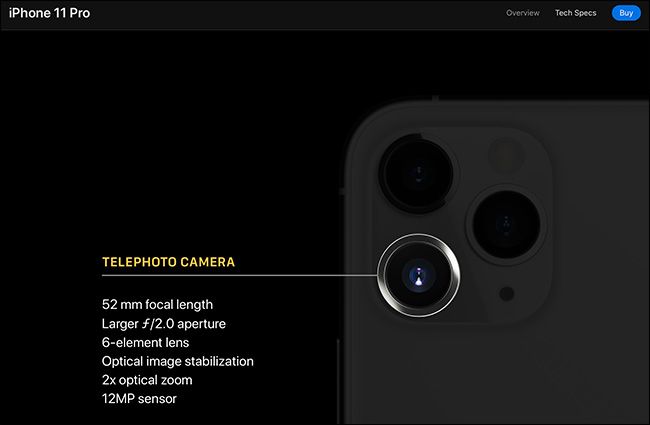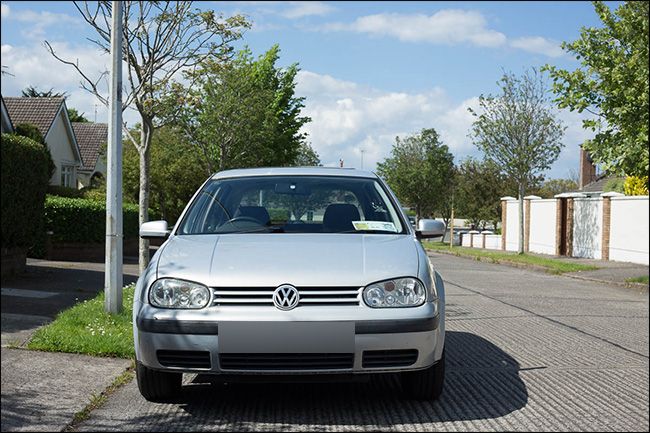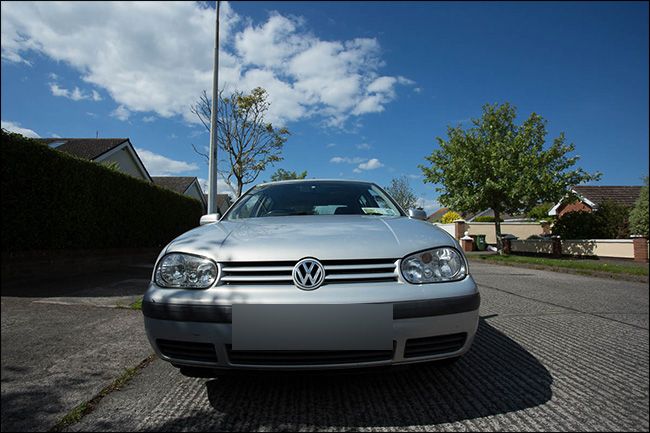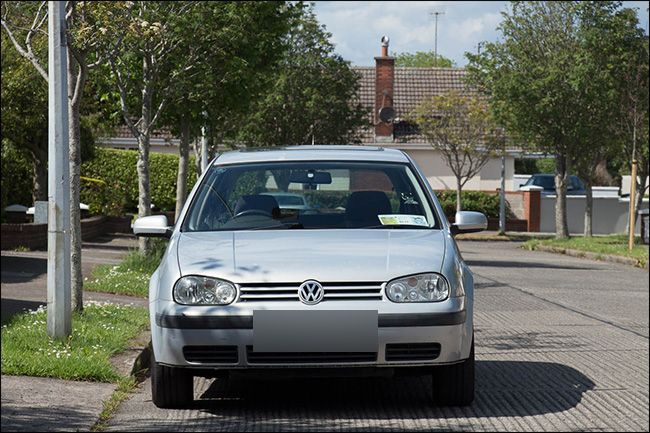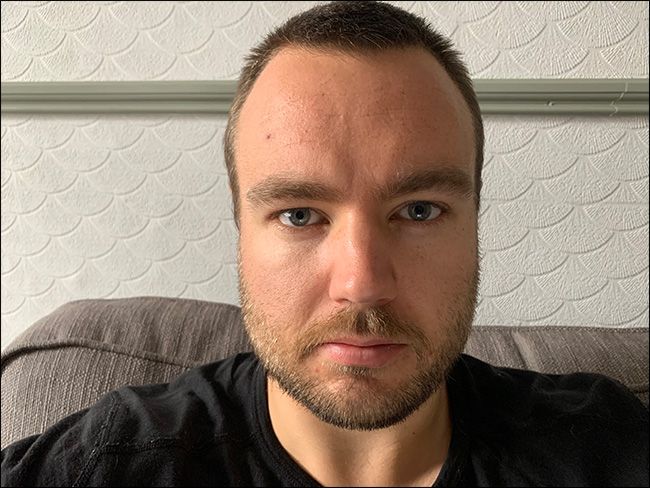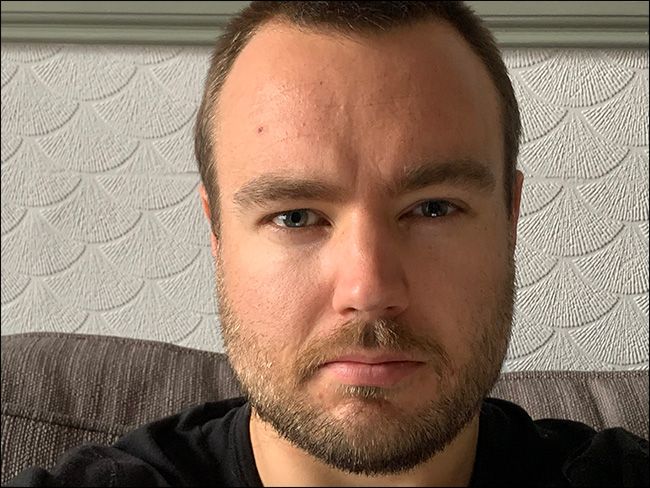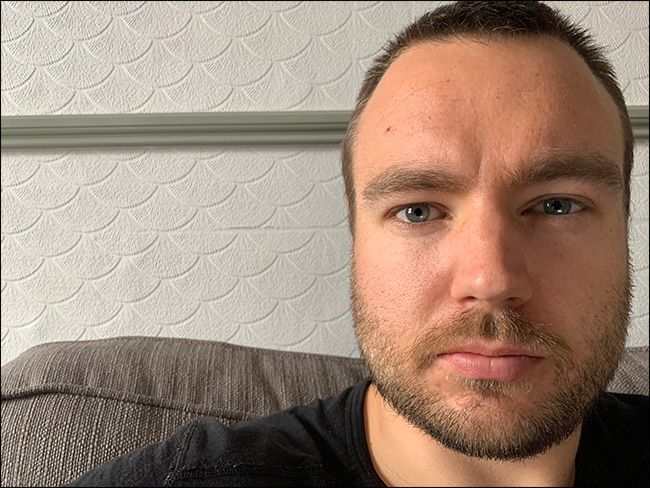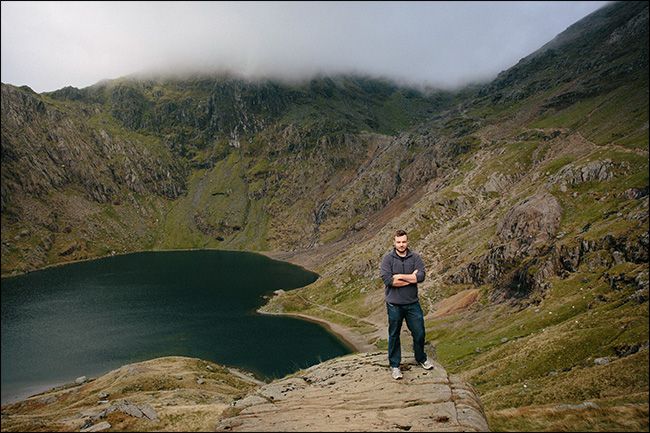Quick Links
If you’ve ever taken a close-up portrait of someone with your smartphone’s wide-angle lens, you might have noticed they look a little . . . off. Maybe their nose seemed a bit big, or their face was just a tad too wide. You weren’t imagining it.
There wasn’t anything physically different about your friend that day. This weird distortion is just the effect wide-angle lenses have on photos of people. You don’t get a wider field of view without changing the perspective in other, subtler ways.
And it’s not just wide-angle lenses; every lens affects how people (and everything else) appear. Understanding what’s going on is important if you want to take better photos---especially since smartphones are now including more lenses.
Let’s dig in!
Focal Length Redux
Lenses are measured in focal length. We’ve looked at some of the underlying physics before, so we'll keep things practical here.
The focal length tells you the field of view of any given lens. This is basically, how wide or zoomed-in your shot will be. In photography, the 35mm film and full-frame digital cameras are used as a standard reference when talking about focal length.
If a lens is described as having a "35mm" or "full-frame" equivalent, or just an "equivalent" focal length of 50mm, that means its field of view is similar to a 50mm when it’s used on a 35mm camera. This is how almost all smartphone cameras, including the one on Apple's iPhone 11 Pro, are marketed.
In reality, the field of view also depends on the size of the digital sensor (or piece of film) relative to the focal length of the lens. The smaller the sensor, the more zoom (and the narrower field of view) you appear to get.
The telephoto lens on an iPhone 11 Pro has a real focal length of 6mm, but that’s the equivalent of a 52mm lens on a full-frame camera, so that’s what Apple markets it as. The technical term for the ratio between the real and equivalent focal lengths is the crop factor.
For the purposes of this article, we’ll mostly be working with full-frame equivalent focal lengths. There’s no need to go too deep to follow along. Just understand that, as with almost everything in photography, there’s some serious simplification going on.
Lens Types
Broadly speaking, there are three kinds of lenses:
- Wide-angle: These have a 35mm equivalent focal length of less than around 40mm. The shorter the focal length, the wider the angle of view, and the worse any associated distortion.
- Normal: Feature a 35mm equivalent focal length of between about 40mm and 60mm. Their field of view roughly approximates how people see things. There’s a bit of fuzziness around the edges, but most subjects in this focal range tend to look pretty natural.
- Telephoto: Their equivalent focal length is longer than around 60mm. The longer the focal length, the narrower the field of view, and the more they appear to zoom in on distant objects.
Focal Length and Perspective
Now that you're up to speed on the basics of lenses, it’s time to talk about perspective. The following shots were all taken with a DSLR to get as much contrast as possible, but the same underlying things happen with the different lenses in your smartphone. Note that the car appears roughly the same width in each shot.
A normal lens takes a photo that just looks normal. The field of view mostly matches what you see with your eyes.
A wide-angle lens doesn’t just include more of a scene in a photo---it fundamentally changes the perspective. Distant objects appear smaller than they do in real life, while objects that are closer appear larger.
Conversely, a telephoto lens doesn’t just make objects appear larger; it's an optical compression effect that makes things look like they're closer together. See how the houses in the background appear much closer in the image below than they do in the normal shot (the first image in this section)?
Smartphone Camera Lens Options
On a smartphone, your lens options are more limited than they are with a DSLR. Because the lenses on a smartphone's camera are built-in, there are some real physical constraints you have to manage. A gigantic telephoto lens might sound like a nice idea until you realize it would double the size of your phone. Wide-angle lenses are far easier to use and more practical for common day-to-day photography.
The iPhone 11 Pro, for example, has the following three lenses:
- Ultra-wide angle: It has an equivalent 12mm focal length (real focal length is 1.54mm).
- Wide-angle: It features an equivalent 26mm focal length (real focal length is 4.25mm).
- A normal lens that Apple calls a telephoto: It has an equivalent focal length of 52mm (real focal length is 6mm). Because a longer focal length typically requires a longer physical lens, it’s unlikely we’ll see a true telephoto lens in any widely available smartphone for a while yet.
That’s a great selection of lenses for anything, barring sports or wildlife photography. However, even with a standard wide-angle lens, there's enough distortion to affect how people look.
Wide-Angles and People
So, what happens when you take a portrait of someone with a wide-angle lens?
That’s a photo of me. Here’s another taken with my iPhone’s 52mm lens.
See how odd my face looks in that first shot? Without the normal one to compare it to, it can be hard to explain exactly what’s wrong. The effect is most obvious around my nose and eyes. In the wide-angle shot, they appear bigger and more bulbous than they are in real life.
The shift in perspective also causes my head to look weirdly round and pinched. This kind of distortion is the source of that old adage that "the camera adds 10 pounds."
There are a couple of factors that affect how severe the distortion is:
- The focal length: The shorter the focal length of the lens, the more distortion you get. An ultra-wide-angle lens makes people look stranger than a wide-angle.
- Subject's distance: The closer the subject is to the camera, the more pronounced the effect will be. If someone is standing a few feet away, you probably won’t notice anything’s amiss. It’s only when you get up close that you really see the distortion.
- Subject's position: The effects of distortion are worse toward the edges of an image. Limbs and other body parts can appear stretched in super-weird ways.
How to Take Good Wide-Angle Portraits
Wide-angle lenses aren’t ideal for close-up portraits. If you want a headshot, you’ll get better results with your smartphone's telephoto lens (if it has one). However, that doesn’t mean you can’t get great portraits with any lens.
Here’s how to do it:
- Step back: The closer you are to your subject, the worse the distortion will be. If you give them a bit of space, they’ll look more natural.
- Center your subject: There’s less distortion in the middle of the frame. Don’t just blindly follow composition rules, like the rule of thirds. Put them somewhere that looks good.
- Include context: Wide-angle portraits are an opportunity to include a great background and add a load of context to a photo. Capture someone doing something cool.
- Don’t stress it: Now that you know why people look odd in photos taken with a wide-angle lens, it won't catch you by surprise. Play around and have fun!


